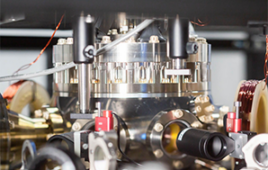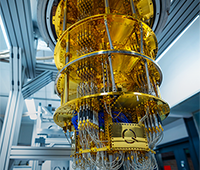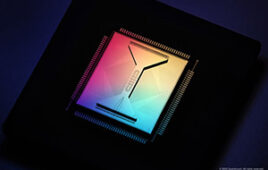 AUSTIN, Texas — Sponsored by Raytheon and coached by staff of the Texas Advanced Computing Center (TACC) at The University of Texas at Austin, Team Texas won the 8th annual Student Cluster Competition this year at the Supercomputing Conference (SC13) in Denver. The University Tower was lit orange to acknowledge this accomplishment.
AUSTIN, Texas — Sponsored by Raytheon and coached by staff of the Texas Advanced Computing Center (TACC) at The University of Texas at Austin, Team Texas won the 8th annual Student Cluster Competition this year at the Supercomputing Conference (SC13) in Denver. The University Tower was lit orange to acknowledge this accomplishment.
“The University of Texas team competed against teams from China, Australia and Germany, as well as teams from Massachusetts, Colorado, Tennessee and California,” said Carlos Rosales-Fernandez, team lead and a research scientist in TACC’s High Performance Computing (HPC) group. “The students put a lot of work into studying the applications before the competition, which gave our team an edge. They did a great job of working out the best execution strategies for the applications while also communicating with other teams,” he said.
The competition challenges rival teams of university undergraduates in a 72-hour-battle to prove that they can design, build, optimize and run the fastest and most efficient cluster computing system within the given power budget. In this real-time, non-stop competition, teams of six students assemble their clusters on the exhibit floor, live on pizza and little sleep, and race to demonstrate the greatest sustained performance across a series of applications and scientific workloads.
“The competition is all about power management ― it’s about getting as much compute power as you can per amp out of two 13-amp circuits,” said Reid McKenzie, one of the competitors and a computer science student at The University of Texas at Austin.
The University of Texas winning team members are:
- Eric Dawson (biology);
- Jim Given (computer science, mathematics);
- Reid McKenzie (computer science);
- Julian Michael (computer science, physics);
- Suvamsh Shivaprasad (computer science); and
- Zachary Tschirhart (computer science, aerospace engineering, mathematics).
The team was coached by Rosales-Fernandez, John Cazes and John Lockman of TACC, and two of last year’s team members served as student advisors: Michael Teng (computer science) and Andrew Wiley (computer science, electrical engineering).
“This competition is a huge educational opportunity for undergraduates and the HPC community,” said John Lockman, TACC’s advanced scientific training coordinator. “It’s the vehicle that drives knowledge transfer from HPC professionals to undergraduate students who would not have been exposed to these topics in traditional educational settings. When we expose new, energetic minds to current technologies and practices, we help to foster the next generation of talented HPC professionals.”
The teams work with company sponsors several months in advance to design and build a cutting-edge system from commercially available components. This year, TACC and Team Texas partnered with Dell, Intel, Mellanox, and Nvidia.
The company sponsors provide the hardware and travel funds, while the TACC coaches worked side by side with the students to teach them the fundamentals of cluster construction, systems administration, and program optimization.
The competition began Monday morning, November 18, when the teams ran the HPCC benchmark, which tests multiple attributes that contribute substantially to the real-world performance of HPC systems. These results are factored into their overall score. They ran the Linpack benchmark independently to compete for the ‘Highest Linpack’ award (this famous benchmark measures the performance of the system solving a large number of linear equations). On Monday evening, all of the teams received the data sets for the scientific applications that they ran over the next 48 hours.
HPCC benchmark scores, results from the scientific applications, and interviews with judges were weighted to determine each team’s final score. Teams were also judged on the presentation of their system, the quality and precision of their results, and interviews with contest judges, who assessed how well the students understood their systems and workloads.
TACC and its industry partners have sponsored student teams in the competition since 2010 when The University of Texas team received the highest Linpack score and was the first team in the competition’s history to submit a Linpack score higher than a teraflop. In 2011, The University of Texas team built an energy-saving cluster that was submerged in mineral oil, which had the highest Linpack score among CPU-only teams. Last year, the team took first place in the overall standings, breaking Team Taiwan’s (National Tsing Hua University) two-year winning streak.
“If we win next year at SC14 in New Orleans, The University of Texas and TACC will be the first-ever three-time winners,” Rosales said.
Nick Troutz, a business development manager in Raytheon’s Intelligence, Information and Services business, said: “Raytheon is proud to support these students. We’re impressed with the high-level talent and enthusiasm these students bring to the competition, and we want to encourage more undergraduates to study high performance computing.”



